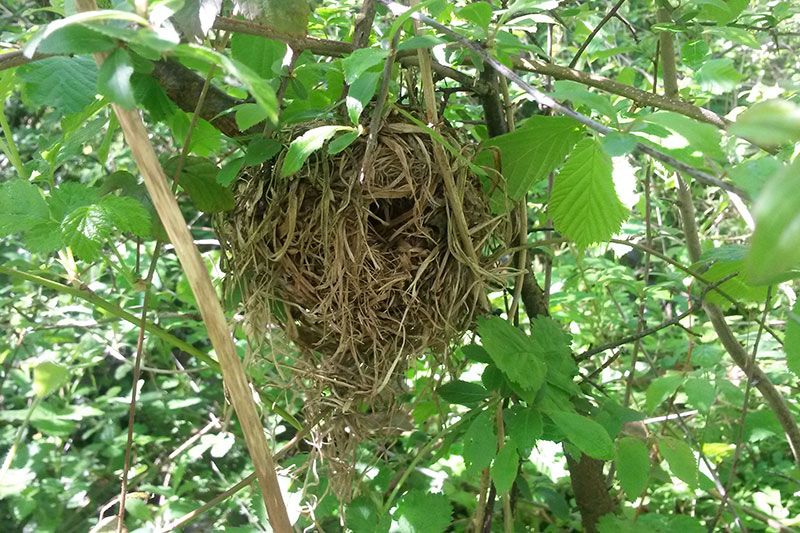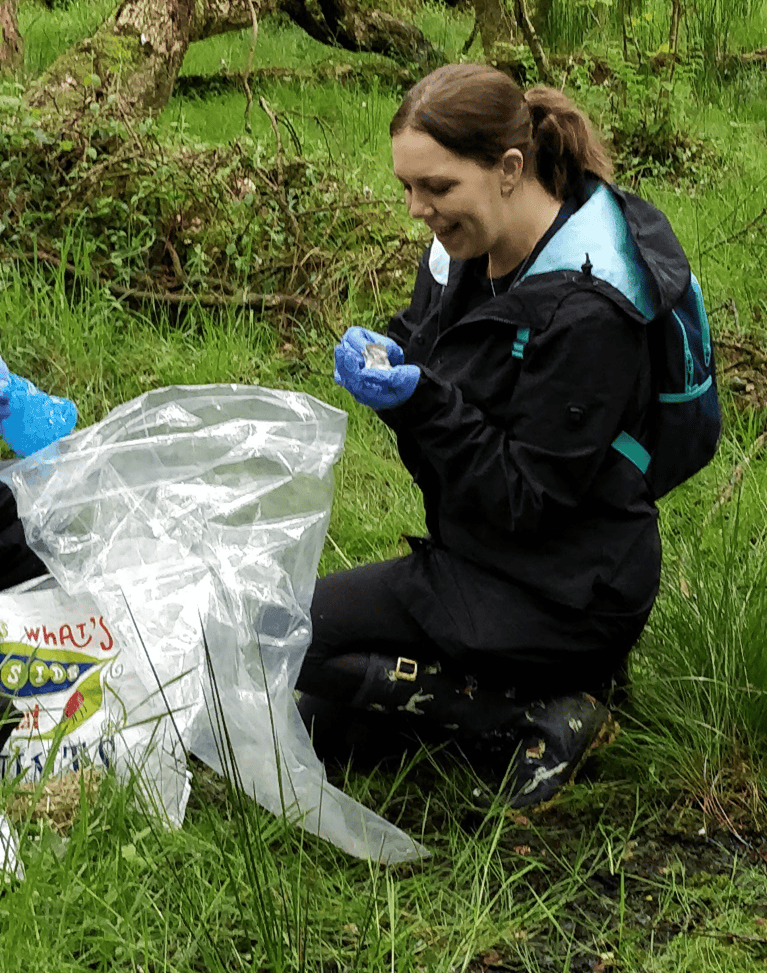How do dormice decide where to nest?

Understanding how dormice think
Hazel dormice construct woven nests which they use for resting and breeding. They use a range of different materials to build them. Natural nests (as opposed to those built inside nest boxes or nest tubes) can tell us whether dormice are present at a site, just as evidence of dormice in nest boxes can. But searching for natural nests is quite challenging in a varied woodland habitat as we lack a clear understanding of the habitat features of the surrounding area that dormice favour when selecting their nest site.
Bradfield Woods is a Suffolk Wildlife Trust nature reserve and one of Britain’s finest ancient woodlands. It has been coppiced – a traditional form of woodland management – since 1252, creating an incredible mosaic of habitat where dormice thrive. The Woods have been closely studied and there is valuable data available to help us understand better how dormice think.
Searching for natural nests
PTES intern Kayleigh Hunt is analysing the nest records to see which plant species are found around the nests, the plant materials used in construction, the height of the nest above ground, its aspect and the abundance of nests in different places. She will then infer the more likely areas where a dormouse would nest build, and test her hypothesis in the field. As well as helping conservationists and ecologists find evidence of dormice through nest searches, there should be useful insights for woodland management, such as the likely impact of deer browsing, where to keep a good understory of bramble or encouraging bramble growth.
Kayleigh will also create a guide on how and where to search for natural nests as indicators of dormouse presence, expanding on information already compiled. And she’ll work out what level of effort is needed for a successful nest search when dormice are present.
The future for dormice
Kayleigh, lives in Cornwall and is busy finishing her part-time MSc in Wildlife Biology & Conservation at Edinburgh Napier University. She’s also on the committee of Cornwall Mammal Group, and her two main loves are mammals and birds. Kayleigh’s a keen advocate for managing churchyards for nature and is building research she’s done in churchyards into her master’s thesis.
Kayleigh says ‘I’m so excited and grateful to PTES for offering me this opportunity! It’s been a dream of mine for many years to be a part of a published study. These tiny mammals need all the support we can give them, and this project has the potential to inform future woodland management to help the species which, given the rapidly changing world we live in and the decline of traditional practices, is vitally important’.
This project is only possible thanks to our generous donors. Can you help by donating today?
Header image credit Michelle Tyrrell

